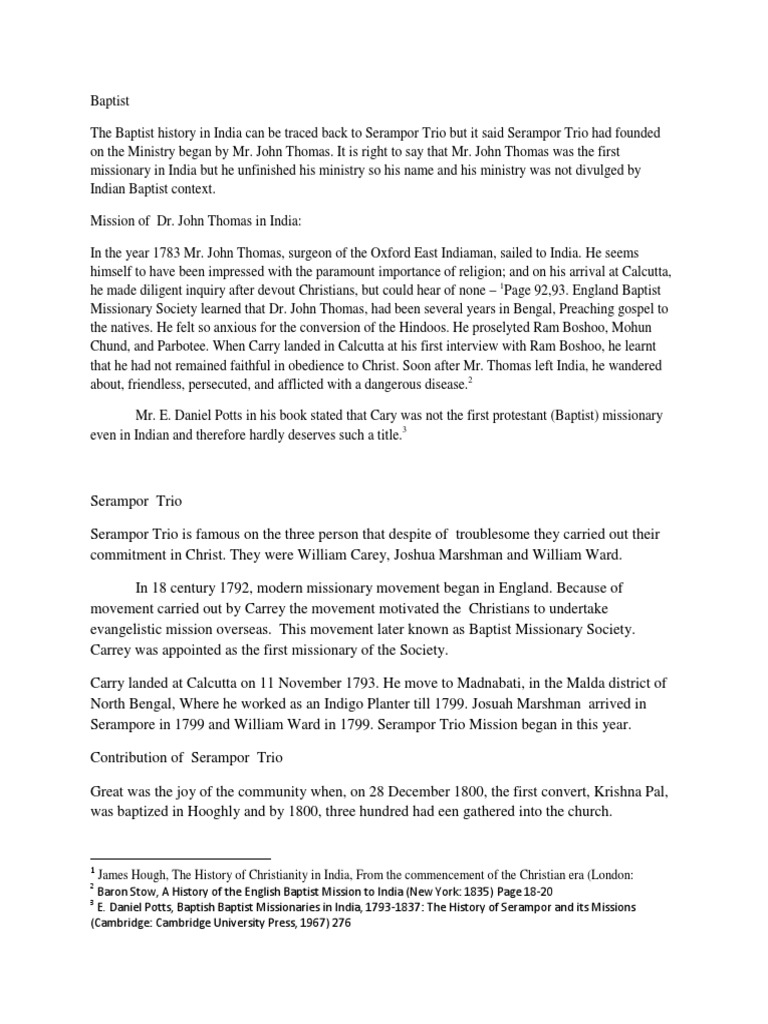The exploration of the origins of the Baptist Church invites contemplation and inquiry. Who really created this denomination? When delving into its history, one may be surprised to uncover the complex tapestry of Protestantism from which it emerged. The roots of this significant branch of Christianity are deeply intertwined with the broader Reformation movement, a period of religious upheaval that forever altered the ecclesiastical landscape of Western Christianity.
To properly understand the genesis of the Baptist Church, one must first contextualize its emergence within the late 16th and early 17th centuries. This was a time characterized by a radical reexamination of Christian doctrine and practice. The Protestant Reformation, spearheaded by seminal figures such as Martin Luther and John Calvin, sought to address perceived corruptions within the Catholic Church. Luther’s 95 Theses ignited a theological wildfire, instigating widespread dissent and the eventual fragmentation of unified Christendom.
The quest for a purer expression of faith resonated deeply with many individuals and groups during this tumultuous period. Among those inspired were early dissenters who would go on to form the Baptist tradition. But who were these individuals? One critical figure worthy of examination is John Smyth. An English Separatist, Smyth is often acknowledged as a pioneer of the Baptist movement in the early 17th century. His interpretation of Scripture led him to advocate for believers’ baptism—the act of baptizing individuals upon their personal confession of faith, rather than the infant baptism prevalent in the Catholic and Protestant churches of his time.
This shift towards believer’s baptism reflects a foundational Baptist commitment to the autonomy of the local church and an insistence on believer-centered faith, a notion that stands in stark contrast to the infant baptism practice. However, Smyth’s early congregation encountered considerable challenges, including persecution and the constant threat of social ostracism. What drove Smyth and his followers to persevere in the face of adversity? Their conviction lay in the belief that scripture alone should guide faith and practice, a principle that would characterize the Baptist ethos for centuries to come.
As the movement gained traction, more influential figures emerged. One can hardly discuss the development of the Baptist Church without mentioning Thomas Helwys, another prominent early leader. Helwys expanded upon Smyth’s teachings and founded the first general Baptist church in England in 1612. His groundbreaking treatise, “A Short Declaration of the Mystery of Iniquity,” emphasized religious liberty and the separation of church and state—a radical notion for its time. Helwys’s advocacy for religious freedom, even for those who opposed his views, underscores a hallmark of Baptist identity: the affirmation of individual conscience in matters of faith.
The evolution of the Baptist Church was not solely confined to the British Isles. In the American context, the Baptists found fertile ground for their convictions. The arrival of the first Baptist congregations in colonial America in the early 17th century marked a significant expansion. Their belief in the necessity of adult baptism and local church autonomy positioned them as a distinctive voice among the emerging religious landscape of the New World. One may ponder: How did these beliefs adapt to the diverse sociopolitical climate of early America? In many respects, the American context allowed for the proliferation of various Baptist subgroups, including General Baptists and Particular Baptists, each with nuanced theological divergences.
The establishment of the Baptist tradition, marked by a penchant for ecclesiastical independence, brought forth challenges as well. Disagreements on doctrinal points led to the development of different Baptist associations. The controversies regarding predestination versus free will and differing views on the mode of baptism further illustrated the dynamic nature of the Baptist identity. These intra-denominational debates contributed to a rich theological diversity that characterizes modern Baptist thought.
In the 19th and 20th centuries, the Baptists played a crucial role in significant cultural and social movements. Their burgeoning involvement in the abolitionist movement, civil rights, and other social justice efforts underscored their commitment to the principle of freedom for all individuals—an echo of Helwys’s early advocacy. Yet, amid these advancements, the Baptist Church has also faced introspection. Challenges related to theological conservatism and liberalism emerged, questioning the interpretation of doctrine within contemporary society. The delicate balance of holding fast to historical tenets while engaging with modern issues remains a pertinent exercise.
As the church navigates the present, it is worthwhile to reflect on its origins and the initial inquiries posed by its founders. Each individual’s quest for truth and authentic faith propels the tradition forward. The narrative of the Baptist Church is not merely a history lesson; it is a living testament to the enduring resilience of faith amid adversity. In contemplating this rich heritage, one might ask: What does it mean to be a Baptist in today’s world? How can the lessons learned from the past inform contemporary Christian practice? Such questions are essential as Baptists continue their journey, striving to embody the teachings of Christ while wrestling with the complexities of a modern society.
In conclusion, the Baptist Church, with its origins deeply rooted in the quest for religious truth and expression, reflects a broader movement within Christianity. It encapsulates the spirit of dissent and earnest seeking that characterized the Reformation and the subsequent European and American religious landscapes. The intertwining stories of John Smyth, Thomas Helwys, and countless others resonate through the centuries as a reminder that the pursuit of faith is a dynamic and often arduous endeavor, continuously unfolding in response to the divine and the contemporary context.



